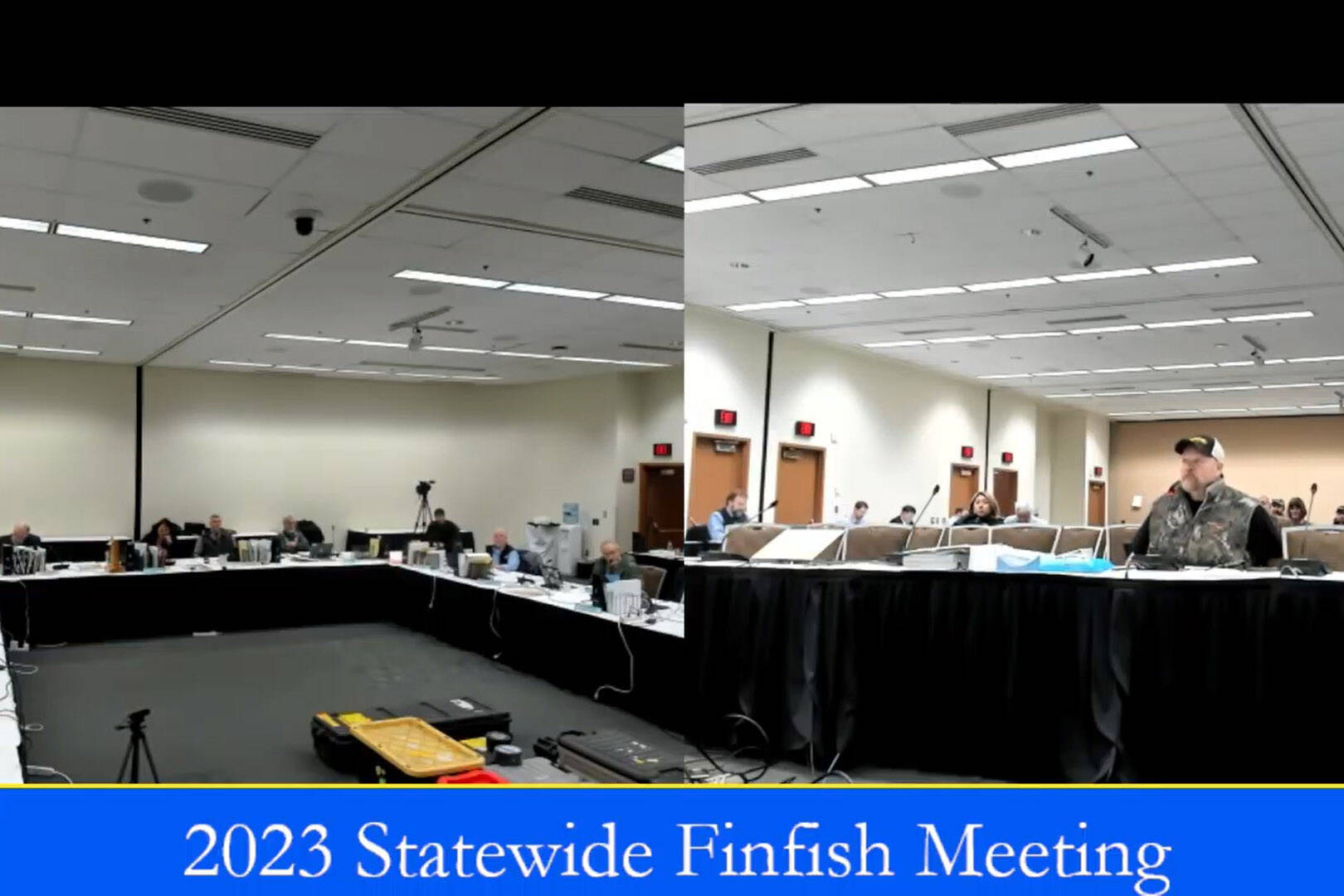The Board of Fisheries passed a set of proposals that affect statewide fishing regulations this weekend at an annual meeting in Anchorage’s Egan Civic & Convention Center.
Of 19 proposals to the board that went through public testimony and committee of the whole this weekend, nine were passed. They included newly defined or permissible equipment, changes to guide registrations on the Kenai River, and updates to the invasive species list.
Proposal 87, which was cleared unanimously, created a state definition for eel sticks, which are straight or bent poles equipped with notches or tines for harvesting lamprey.
Proposal 153 creates a definition for escape mechanisms for collapsible groundfish pots. It was approved unanimously with the addition of an amendment by the department that described the escape mechanisms as well as region-specific considerations.
In the Cook Inlet, groundfish pots may not be connected to one another, unless they are in a sablefish fishery, in which case they must have buoys at each end.
The board approved the use of underwater spearguns per Proposal 155.
Felt-soled wading footwear in freshwater areas was prohibited by Proposal 156, with the board saying they strongly support any measures to prevent harmful invasive species from being entered into local waters. Proposal 166, which was proposed by the department, said that felt-soled gear was a primary vector for the transfer of whirling disease, rock snot, mud snails and mussels.
An amended Proposal 161 was passed, which would create policy regarding the management of groundfish in Alaska.
Proposal 162 was also passed with amendment, simplifying registration decals in the Kenai River Special Management Area. The Kenai River Special Management Area decal from the Department of National Resources will be able to serve as proof of State Department of Fish and Game registration, instead of both stickers being needed.
Compensation for guide services in subsistence fisheries will be prohibited after the passage of Proposal 165.
Proposal 165 was one of a set of proposals — Proposals 163-167 — largely opposed by local anglers that targeted guiding in personal use and subsistence fisheries. Kenai River dipnetting is a personal use fishery. The others in the set, 164, 166 and 167 were all unanimously defeated. 163 was pulled by its author before the vote.
The board approved Proposal 168, which expanded department emergency order authority to allow for restrictions of sport fishing in contaminated waters, and Proposal 169, which updated the state’s invasive species list.
The invasive species list includes two classifications, Class A and Class B. Class A invasive species aren’t permitted in any form — including living, dead or just a part of its genetic material. Class B species can come to Alaska if dead. An amendment to the proposal passed by the board leaves a variety of crayfish on the Class B list for commercial purposes.
For more information about the Board of Fisheries, visit adfg.alaska.gov. To view full archived recordings of the meeting, visit “Alaska Board of Fisheries” on YouTube.
Reach reporter Jake Dye at jacob.dye@peninsulaclarion.com.

